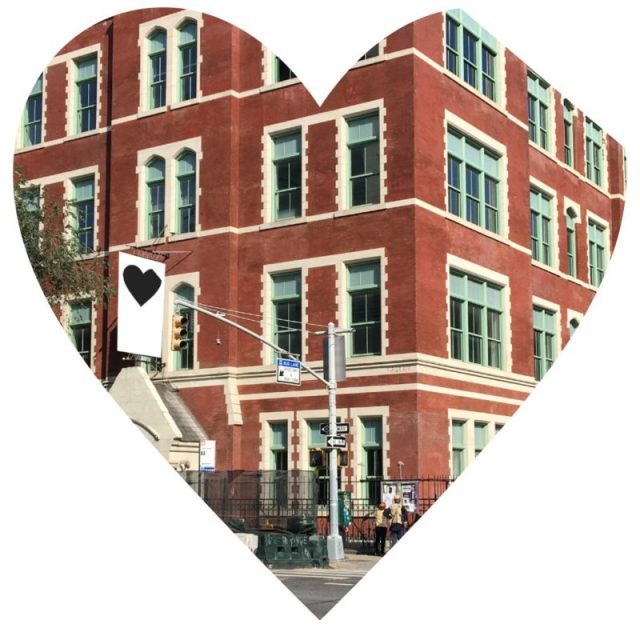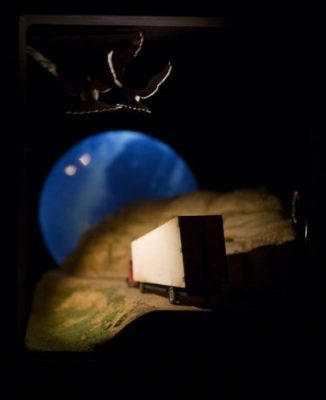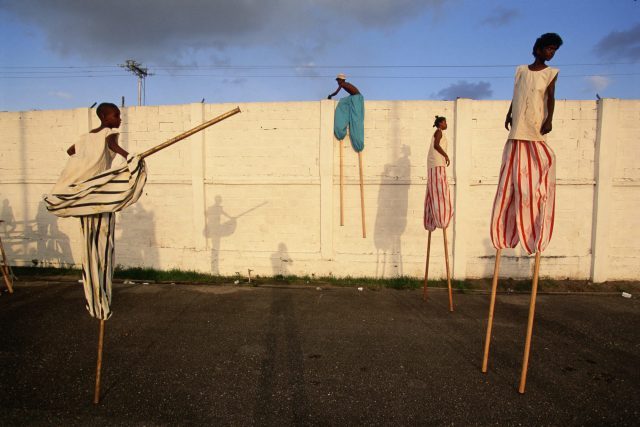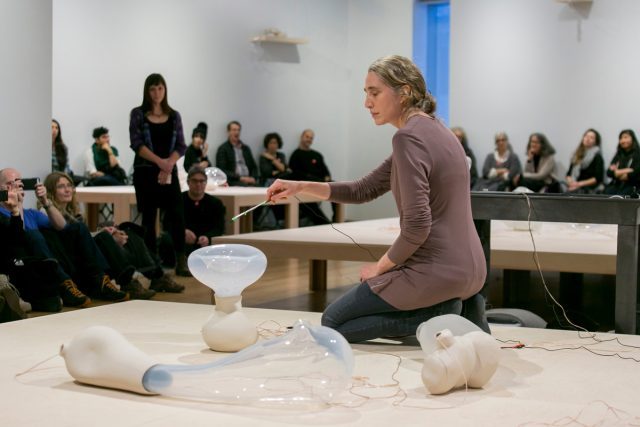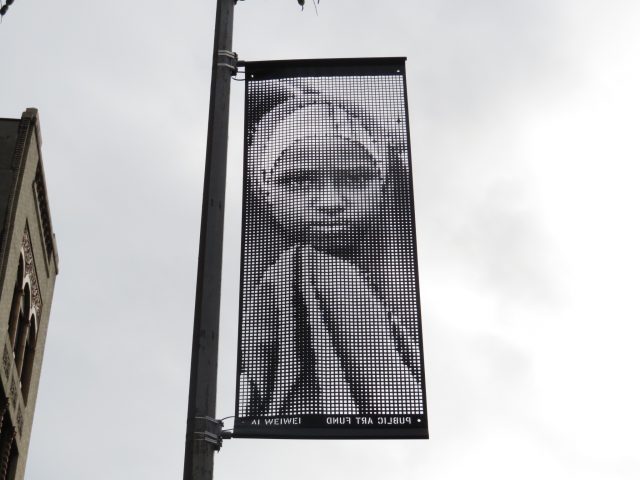
One hundred banners throughout the city identify the plight of specific refugees (photo by twi-ny/mdr)
Multiple locations in all five boroughs
Through February 11, free
www.publicartfund.org
aiweiwei.com
good fences slideshow
There’s less than a week left to experience as much as you can of dissident Chinese artist Ai Weiwei’s extraordinary “Good Fences Make Good Neighbors” Public Art Fund project, consisting of a variety of works at more than three hundred locations in all five boroughs. The massive installation went up October 12, in conjunction with the release of his stunning documentary, Human Flow, in which he visited twenty-three countries in order to personalize the global refugee crisis. The exhibition takes its title from the last words of Robert Frost’s poem “Mending Wall,” which includes the line “We keep the wall between us as we go.”
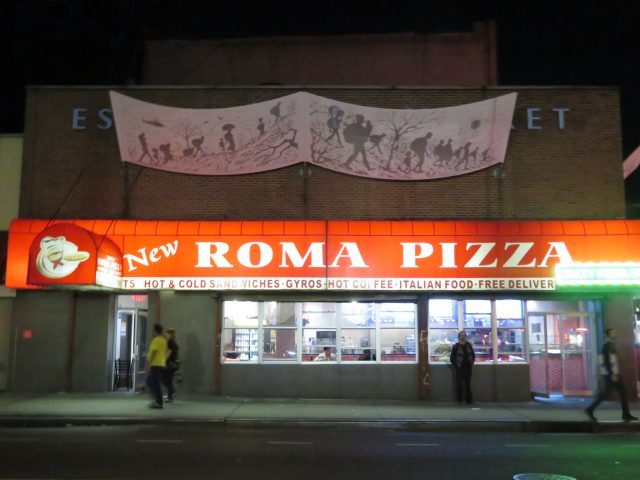
Ai Weiwei takes on the international migrant crisis in widespread exhibition (photo by twi-ny/mdr)
As Congress and the president battle over immigration reform, sanctuary cities, deportation, the fate of the Dreamers, and the construction of a wall on the Mexico border, Ai, whose family was exiled for political reasons when he was a child, shares hundreds of works in five main groups. Banner photographs of two hundred individual refugees, printed on double-sided cut black vinyl, jut out from lampposts that make it appear as if the person is disappearing into thin air right before our eyes. Ai has also created one hundred “Good Neighbors” photos of refugees arriving in countries and settling in makeshift camps in Bangladesh, Turkey, Lebanon, Gaza, and Greece. Classical Greek–style friezes, called “Odyssey,” depict scenes of the refugee crisis in black-and-white, from military maneuvers to people living in tents. “Exodus” is a series of black-and-white linked banners on Essex St., filled with symbolism, showing families leaving their homes and searching for a new place to live. (One part hovers over a pizzeria called Roma, evoking the plight of Romani refugees.) Fences have been installed in between buildings on the Lower East Side, a major immigrant area where Ai lived in the 1980s. And gates have been added to bus shelters in Brooklyn, Harlem, and the Bronx, equating borders with public transportation that can take riders just about anywhere.
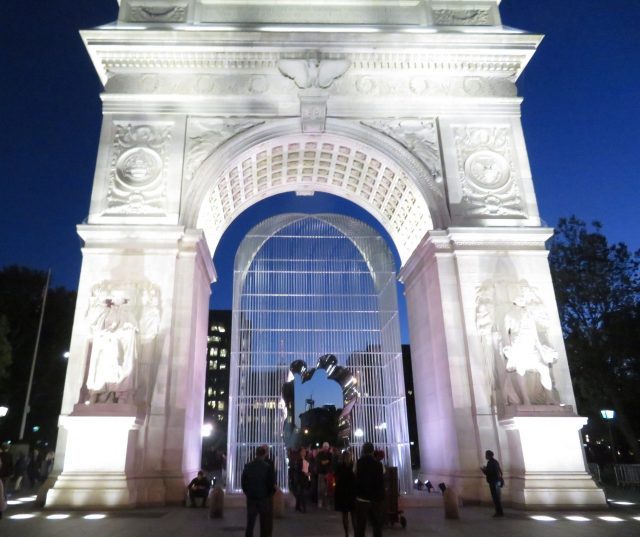
Ai Weiwei has installed a unique passage underneath the Washington Square arch (photo by twi-ny/mdr)
Several one-of-a-kind site-specific works further connect with the history of the city. Inside the Washington Square arch, Ai has installed a thirty-seven-foot steel cage with a passage in the outline of two giant people; off to the side are empty jail-like cells. Washington Square Park, of course, is famous for its diversity and acceptance of everyone; however, it has also been the site of protests and class and race riots. Five fences cover large windows on the facade of the Cooper Union, the institution where Abraham Lincoln gave a critical speech on slavery and the two major political parties on February 27, 1860.
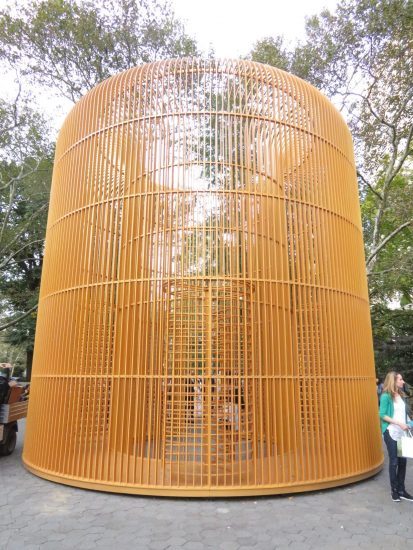
Gilded Cage sits on the edge of busy Central Park entrance (photo by twi-ny/mdr)
“Gilded Cage” resides on Doris C. Freedman Plaza at the Scholars’ Gate entrance to Central Park on Fifth Ave. and Sixtieth St., a large circular cage, bathed in gold, with a door so tourists and New Yorkers can go inside, where there are hard-to-reach turnstiles that represent yet another blockage. The first time I was there, I watched as a white couple in tuxedo and wedding dress went in and had pictures taken by their photographer, none of whom were quite getting the irony. It reminded me of wealthy people who pay to spend a night in jail as part of a fundraising gathering.
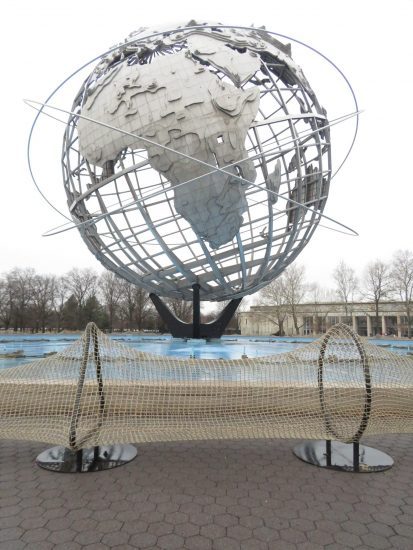
Rope barrier around Unisphere isolates the globe from the one of the most diverse places in the world (photo by twi-ny/mdr)
Finally, “Circle Fence” is a hammock-like rope barrier surrounding the Unisphere in Flushing Meadows Corona Park, a giant globe constructed for the 1964–65 World’s Fair in Queens, welcoming visitors from all over the planet to one of the most diverse areas on Earth. The fence is only a few feet high, sectioned off by geometric shapes in a repeating sequence. Feel free to sit or lie down on it, although not every area is conducive to comfort. While I was walking around it, a Chinese bride and groom, wearing traditional red outfits, and their wedding party arrived for pictures. They all pulled themselves over the barrier relatively easily, then posed for pictures with the Unisphere behind them. I have a feeling Ai would have gotten a big kick out of this timely interaction.
